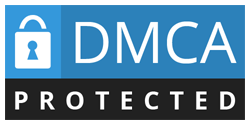Do you have a factory or assembly line for your products? If so, you must know about the differences between process vs. discrete manufacturing.
Companies change methods to fit their products, sometimes mixing both methods. This is why industry distinctions are hard to make. But you can still learn a lot about each in terms of functionality.
Process Manufacturing Vs. Discrete Manufacturing
So what is the difference, and why does it matter? Read on to find out.
What Is Process Manufacturing (PM)?
Process manufacturing is the production of goods by combining supplies, ingredients, or raw materials. Moreover, it uses a set of chemical, physical or biological transformation processes. This usage is common in the food, beverage, pharmaceutical and chemical industries.
What is Discrete Manufacturing (DM)?
Discrete manufacturing is the process of production of products or units. So, it usually involves the assembly of final products from particular parts.
This usage is common in the electronics, aerospace, and automotive industries. If you’re planning to use this kind of manufacturing in your business, you need to look into custom engineered solutions.

The Advantage of Process Manufacturing
Process manufacturing (PM) has many benefits over discrete manufacturing. First, It is more efficient than discrete manufacturing. Since it eliminates the need for waste created by product differentiation.
It results in a higher quality product. Since there is a lesser probability of human error. Finally, It is more flexible than discrete manufacturing. It means that it can more easily accommodate changes in customer demand.
Also Check: 6 Things You Need to Know About Process Manufacturing
The Advantage of Discrete Manufacturing
Discrete manufacturing (DM) is often used for custom-made items. And for products that need high accuracy and precision.
The main advantage of Discrete manufacturing (DM) is that it allows for flexibility and customization than process manufacturing. This is more suited to small-scale production.
Also Check: Why Should You Use Rubber Grommets?

The Difference Between Process Vs. Discrete Manufacturing
Discrete manufacturing (DM) is the assembly of products from unique components. While process manufacturing (PM) combines substances to create products with specific chemical compositions. The difference between the two types of manufacturing is in the process of materials combination.
In Discrete manufacturing, they use different parts to combine to create a final product. In contrast, Process manufacturing combines substances to create a product with specific chemical properties.
Discrete manufacturing is used to produce products like cars, appliances, and electronic devices. Common use of process manufacturing is to produce chemicals, food and liquid products, pharmaceuticals, and paper. The type of manufacturing usage depends on the type of products producing.
Discrete manufacturing is more suited for products that need proper assembly. At the same time, Process manufacturing is more suited for products that need specific chemical properties.
Also Check: Top 5 Applications of Electric Discharge Machining
Understanding The Difference Between Process Vs. Discrete Manufacturing
Discrete manufacturing (DM) is the term for a manufacturing process (MP) in which the products are produced one at a time or in small batches.
On the other hand, process manufacturing (PM) is the term for a manufacturing process (MP) in which large quantities of products are made at once, and the process is continuous.
There are several key differences between process vs. discrete manufacturing. That includes the product type, the manufacturing environment, the production control methods used, and the skills needed by the workforce. Considering all of these factors is important when deciding which MP to use.
Also Check: The Ultimate Guide On The Plastic Extrusion Process
Images by jdn2001cn0, Ulrike Mai and Silas Camargo Silão

